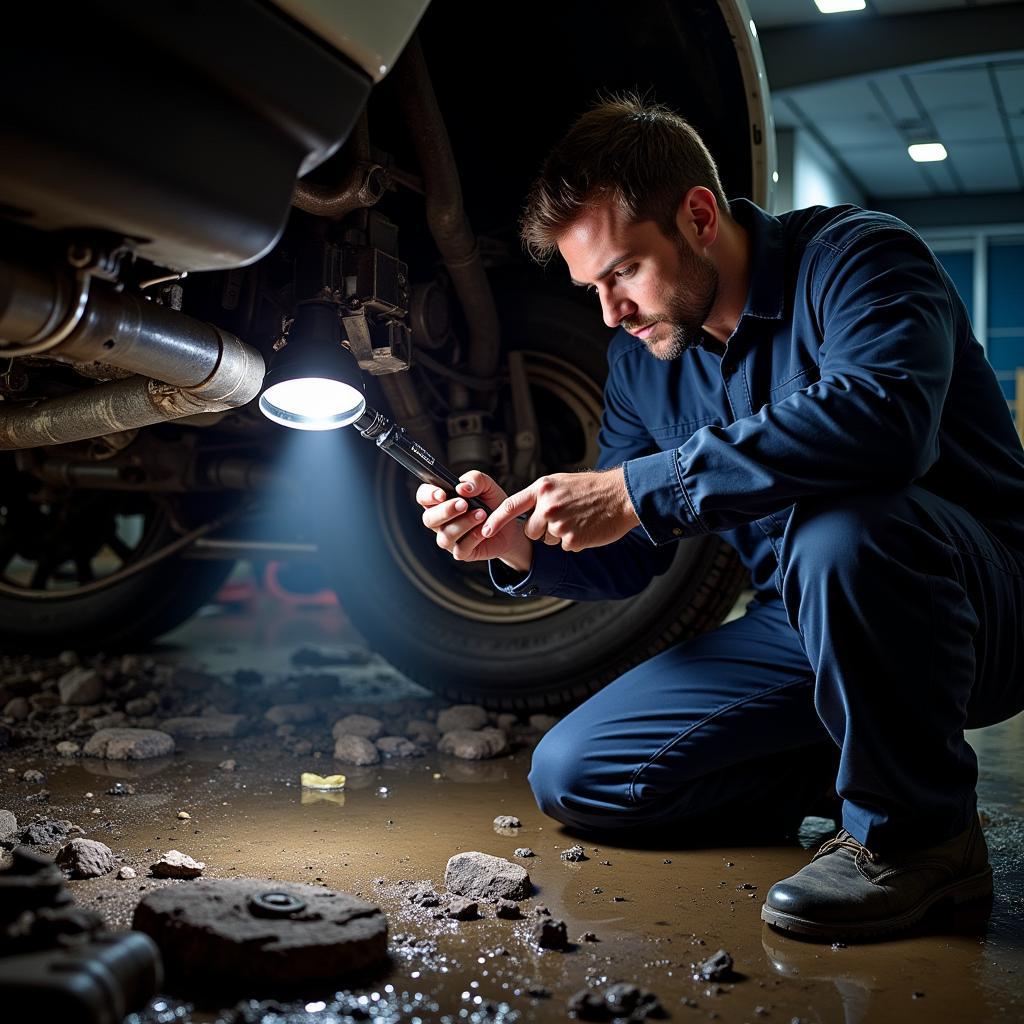Submerging your car in deep water, whether due to flooding, accidental driving into a body of water, or other unfortunate circumstances, can be a devastating experience. Knowing How To Fix A Car In Deep Water is crucial for minimizing damage and potentially saving your vehicle. This article will guide you through the essential steps to take after your car has been submerged.
Don’t attempt to start the car immediately. This can cause further damage to the electrical system and engine. Instead, disconnect the battery as soon as possible to prevent short circuits. After the car has been towed out of the water, the real work begins. Assessing the damage is the first step in determining if the car is salvageable.
Assessing the Damage After Deep Water Submersion
After your car has been retrieved from the deep water, carefully inspect the exterior and interior for visible damage. Check for dents, broken glass, and the extent of water penetration inside the cabin. This initial assessment will give you a general idea of the scope of the problem. Next, check all fluids, including engine oil, transmission fluid, brake fluid, and power steering fluid. Water contamination will appear as a milky discoloration. fix minor scratches on car paint can help minimize some cosmetic damage.
Checking the Electrical System
The electrical system is particularly vulnerable to water damage. How to fix a car in deep water involves a thorough inspection of the electrical components, including the wiring, fuses, and control modules. Look for signs of corrosion or water damage. Damaged components may need to be replaced or professionally cleaned.
How to Fix a Car in Deep Water: Step-by-Step Guide
- Disconnect the battery: This is the first and most important step.
- Tow the car: Do not attempt to start the car. Have it towed to a safe location.
- Assess the damage: Inspect the interior, exterior, and all fluids for water damage.
- Dry the interior: Remove all floor mats, upholstery, and any other water-soaked items. Use a wet/dry vacuum to remove standing water.
- Flush all fluids: Drain and replace all contaminated fluids, including engine oil, transmission fluid, brake fluid, and power steering fluid.
- Clean and dry the electrical system: Inspect all electrical components for water damage and corrosion. Clean and dry all connectors and wiring harnesses.
- Check the engine: If the engine was submerged, it may require extensive repairs or replacement.
- Inspect the transmission: Water contamination can damage the transmission. Have it inspected by a qualified mechanic.
- Check the brakes: Water can compromise the braking system. Have the brakes thoroughly inspected and serviced.
- Clean and disinfect the interior: After everything is dry, clean and disinfect the interior to prevent mold and mildew growth.
 Mechanic Inspecting Flood Damaged Car
Mechanic Inspecting Flood Damaged Car
“Remember, safety first! Never attempt to start a car submerged in water. Always disconnect the battery immediately and have the car towed to a safe location.” – John Smith, Automotive Engineer
Can a Flooded Car be Fixed?
Whether or not a flooded car can be fixed depends on the extent of the damage and the type of water. how to fix scratches on car headlights provides tips for addressing minor damage. Freshwater damage is often less severe than saltwater damage, which can quickly corrode metal components. In some cases, the cost of repairs may exceed the value of the vehicle.
“Saltwater is particularly corrosive and can cause significant damage to a car’s electrical system and metal components. A thorough inspection by a qualified mechanic is essential.” – Maria Garcia, Certified Mechanic
can you fix paint chips on car discusses another type of car repair. fixing scratches on leased cars provides information on dealing with scratches. care skin care deep moisture fix hydrating water cream is a seemingly unrelated link.
Conclusion
Knowing how to fix a car in deep water is essential for mitigating damage and potentially saving your vehicle. Following the steps outlined in this guide can help you assess the damage and take the necessary actions. However, it’s crucial to have a qualified mechanic thoroughly inspect the car before attempting any repairs. For assistance or further guidance, contact AutoTipPro at +1 (641) 206-8880 or visit our office at 500 N St Mary’s St, San Antonio, TX 78205, United States. We’re here to help you navigate the challenges of how to fix a car in deep water.




Leave a Reply